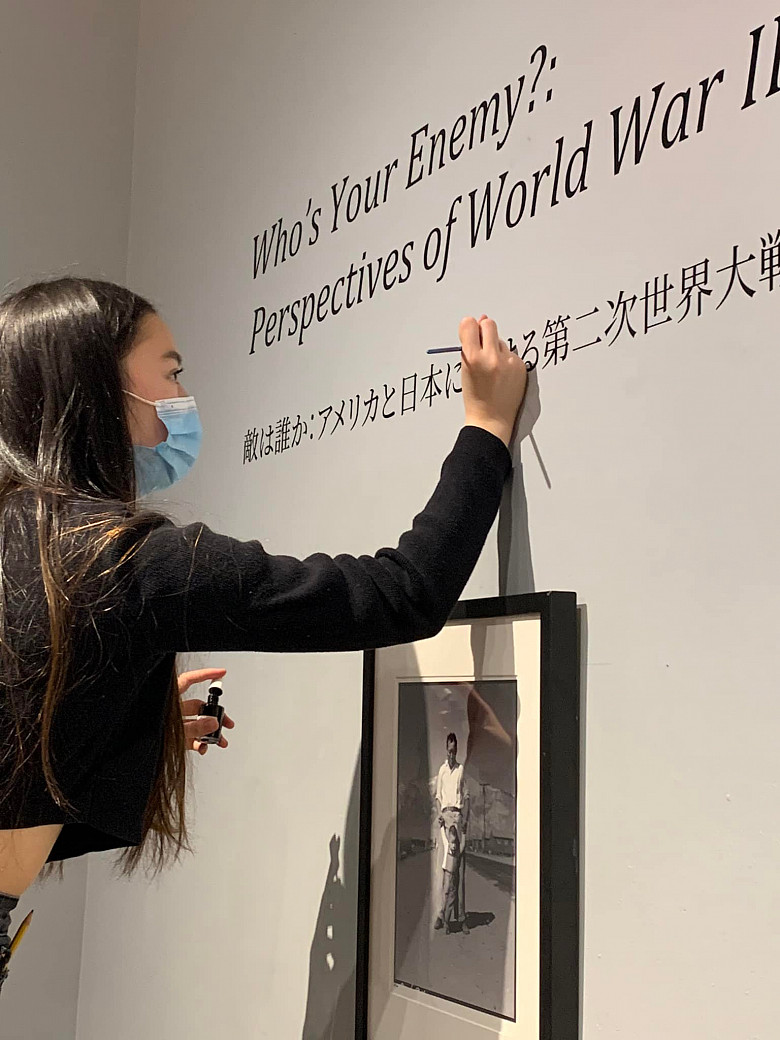Museums and Modern Languages
Beloit College is known for the accessible nature of the museum collections, and two language classes taught last spring–Professor Sylvia López’s “Health in the Spanish-speaking World” and Professor Susan Furukawa’s advanced Japanese class “Narratives of War and Peace”– demonstrated just how fruitful collaborations between the Department of Modern Languages and Literatures and campus and community museums can be.
Working with Logan Museum curator Manuel Ferreira, Prof. Sylvia López’s SPAN 218/HEAL 218 class on health in the Spanish-speaking world curated a bilingual exhibit as their final project. In addition to learning about the curatorial process by writing labels, collaborating on the design, and setting up the exhibit, students engaged in describing and studying museum objects and artifacts (e.g., cacao beans, coca leaves, clay tablets, a retablo, a tumi, ceramic figures) to learn where in Latin America they originated, who used them, and for what health-related reasons. Students developed not only linguistic skills in writing, reading, and speaking in Spanish but also skills in collaboration, problem-solving, critical thinking, and information literacy, all while having fun.
Meanwhile, students in Professor Furukawa’s class analyzed multiple examples of World War II narratives from Japan and the United States. They used their language skills to read manga and museums materials before looking at materials from the 1930s and 1940s. This background helped students consider how various stories impacted the way citizens and soldiers viewed themselves and their “enemies” during wartime. Students then gathered materials for display from Japan as well as from the Wright Museum of Art, the Logan Museum, the Beloit College Archives, and Beloit Historical Society and presented in the resulting exhibit, “Who’s Your Enemy: Perspectives of World War II in the US and Japan.” The items in the exhibit engaged with the mobilization of the home front and the propagation of racist rhetoric, among other topics, and encourage museum visitors to consider the importance of engaging critically with the stories we’re told.
Share:
Open gallery

Related Stories


